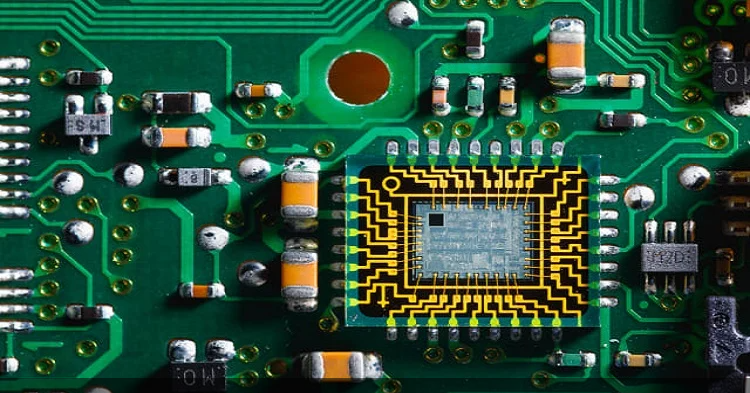12月 25, 2023
531
An integrated circuit (IC), commonly referred to as a microchip or simply a "chip," constitutes a downsized electronic circuit that integrates various electronic elements, including transistors, diodes, resistors, and capacitors, onto a diminutive semiconductor wafer, typically composed of silicon. In a parallel vein, a photonic integrated circuit (PIC), also denoted as an optical IC, bears resemblances to an electronic IC but is purposefully designed to manipulate and process light (photons) instead of electrical signals (electrons). These PICs are typically constructed from materials such as silicon, indium phosphide, or other semiconductors with proficient photon-manipulating properties. They incorporate a diverse array of photonic components, encompassing waveguides, modulators, detectors, and multiplexers, all harmoniously integrated onto a singular chip. The compact form factor of PICs facilitates the development of petite yet highly efficient optical systems, proficient in executing tasks such as high-precision data transmission, signal processing, and sensing with exceptional speed and precision.

The functionality of a PIC entails the precise control and regulation of the propagation of light, represented by photons, through a series of optically sophisticated components seamlessly embedded within individual microchips. Typically, this process initiates with the activation of a light source, often realized as a laser diode or LED, emitting photons that convey encoded information within light waves. Subsequently, the emitted photons are effectively channeled into waveguides.
As photons traverse the waveguides, they interact with various optical elements, undergoing diverse modifications, including modulation, routing, and splitting. The precise arrangement and configuration of components on the PIC dictate these processes. Upon the completion of these prescribed functions, the light signals are directed toward output waveguides or detectors. At this juncture, the signals can either undergo reconversion into electrical signals for subsequent data processing or be directed toward external optical elements or fibers for onward transmission.
Various optical components, such as modulators, couplers, splitters, and detectors, are seamlessly incorporated into the PIC. These components are meticulously engineered to perform specific functions. For instance, modulators can alter the intensity or phase of the light signal, facilitating the modulation of information carried by the photons. This modulation is pivotal for encoding data into the light signal. Similarly, couplers can amalgamate or divide light signals, enabling the routing and distribution of photons to distinct sections of the chip. Photodetectors play a crucial role in converting optical signals back into electrical signals for further processing or detection.
The process of designing and optimizing the performance of PICs entails the simulation of light behavior as it traverses the integrated optical components on the chip. The initial step involves defining the physical layout of the PIC and specifying the positions and dimensions of waveguides, couplers, modulators, detectors, and other optical components. This information is imperative for accurate modeling. Subsequently, suitable software tools or platforms for PIC modeling should be selected. A plethora of simulation tools, both commercial and open source, specifically cater to photonic simulations. Noteworthy examples include Lumerical FDTD, RSoft, COMSOL Multiphysics, and MODE Solutions. The choice of tool should align with specific simulation requirements.
The simulation environment is then established by setting parameters such as the wavelength of light, refractive indices of materials, input conditions (e.g., light source properties), and the designated simulation time or spatial domain. Attributes about the optical characteristics of materials within the PIC, including refractive indices, dispersion traits, and absorption coefficients, are subsequently assigned. Different simulation methodologies are then employed to unveil the behavior of the PIC. For instance, in scenarios involving waveguides within PICs, eigenmode solvers play a pivotal role in revealing supported modes, commonly referred to as eigenmodes. These solvers provide crucial information such as mode profiles, effective indices, and dispersion characteristics. Concurrently, the Finite-difference time domain (FDTD) and finite-element method (FEM) are harnessed to replicate the journey of light through intricate structures, encompassing waveguide couplers, splitters, modulators, and detectors. FDTD and FEM techniques excel in providing intricate insights into the complex interplay between light and each constituent component.
Subsequently, simulations are executed based on the defined geometry, optical properties, and simulation techniques. Iteration and refinement of the design may be necessary based on simulation results to optimize PIC performance. Analysis of simulation results provides insights into the behavior of light within the PIC, encompassing mode profiles, optical power distribution, losses, and other pertinent parameters. Upon the optimization of the PIC design through simulations, experimental testing in a laboratory setting is imperative to validate the accuracy of the model.
The unique capabilities of PICs in manipulating and processing light render them poised to revolutionize various industries and applications. Specific sectors where PICs offer notable benefits include:
Telecommunications: PICs are indispensable in high-speed optical communication networks, facilitating the transmission of extensive data over considerable distances. They find applications in optical transceivers, switches, and routers within data centers and telecommunications infrastructure.
Data Centers: The burgeoning demand for high-speed data processing and transfer within data centers is aptly met through the utilization of PICs in interconnects and optical switches, significantly enhancing data center efficiency.
Healthcare: In medical imaging, diagnostics, and minimally invasive surgery, PICs contribute to the advancement of imaging technologies such as optical coherence tomography (OCT) and furnish precise optical sensors for medical devices.
Sensing and Monitoring: PICs play a pivotal role in various sensing applications, including environmental monitoring (e.g., pollution detection), aerospace (e.g., lidar for autonomous vehicles), and industrial process control (e.g., chemical and gas sensors).
Defense and Aerospace: PICs are integral to optical radar systems, secure communication, and navigation in defense and aerospace applications.
The operational paradigm of a PIC revolves around the manipulation of light through a myriad of integrated optical components, guiding photons along predetermined paths and executing functions such as modulation and routing to accomplish designated optical processing tasks. The crux of a PIC's functionality lies in the meticulous design and integration of these optical components onto a minute semiconductor chip. Leveraging their small and efficient nature, PICs can be seamlessly integrated into compact optical systems, adept at high-throughput data transmission, signal processing, and sensing.